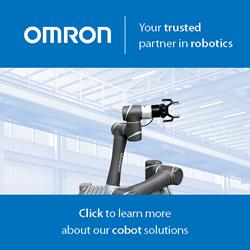WorkFar Robotics Unleashes Sentient Humanoid Robots "Syntro" into the WorkForce
WorkFar Robotics' sentient humanoid "Syntro" is a sophisticated, AI-enhanced robot in human form that can be effortlessly controlled by a remote human operator sensing the robot's environment in real time and gives it genuine intelligence.
This isn't just another gimmick to wow the tech enthusiasts at CES. While the world's most famous humanoid robots (think Hanson Robotics' Sophia) are designed primarily to inspire curiosity, AI-enhanced robots in human form are finding practical, cost-cutting applications throughout manufacturing, warehousing, and related industries. With their ability to sense their environment and transmit sensory information back to a remote operator, humanoids are ready to take on dangerous tasks and harness the skills of people all over the world.
WorkFar Robotics, a company that leases a human-robot team to logistics and manufacturing businesses on a monthly basis, recently unveiled its new "Syntro" robot. Unlike the collaborative robot ("cobot") or autonomous mobile robot (AMR) solutions that are becoming more common in these industries, Syntro is a teleoperated, "sentient" robot that interacts seamlessly with its environment, supplemented with powerful artificial intelligence onboard the physical robot.
Virtual Reality, Eye Tracking, and Haptic/Force Feedback give Syntro Sentience
Syntro uses a variety of exciting technologies to transmit information about its environment back to the teleoperator. Eye tracking and virtual reality allow it to detect objects like boxes, raw materials, and totes and designate target items to act upon. While wearing VR goggles, the operator sees the remote environment with Augmented Reality overlays highlighting individual items that are within reach.
Upon directing the robot to lift a box, for example, the operator senses the completed action thanks to a pair of gloves that incorporate both haptic and force feedback. Haptic feedback is the vibratory sensation on the operator's gloves upon coming into "contact with" a remote object, while force feedback transmits the pressure of the object's surface, tightening the gloves so that the operator's fingers are unable to move past where the boundary would be.
This is real-time sentience, transmitted from the humanoid robot to a person anywhere on the face of the Earth. Someday, this technology may transcend the industrial workplace to allow the average person to socialize and shake hands with friends and family in faraway parts of the globe.
Advanced Artificial Intelligence executes the Operator's Intention with Ease
You may be wondering how much maneuvering on the operator's end is required to successfully manipulate an object. The answer is essentially none. Although it's not quite accurate to say that the operator "doesn't even need to lift a finger," lifting an arm (or two) is pretty much where the operator's job ends, and the robot's job begins. Artificial intelligence takes care of the nitty-gritty, from identifying the shape and size of target object and determining how to pick it up in a stable way.
These AI algorithms form the basis of robotic perception, which basically means analyzing data that Syntro gleans from its environment and outputting useful sensory information to the operator. The more data the robot can collect from working in a variety of situations, the more powerful the algorithms will be — and that's why WorkFar will soon launch a groundbreaking program to train its AI by letting millions of businesses lease their robot fleets with no down payment.
Since there's a teleoperator, human intelligence is always at the helm, but AI is instrumental in creating the intuitive interactions between the robot and its environment through its computer vision, inverse kinematics, physics calculations, and more. Essentially, a human tells the robot WHAT to do, while the onboard AI directs the robot HOW to do it. The robot's seamless and dexterous grasp provides consistency while sparing the operator any risk of repetitive stress injury or bodily damage from heavy lifting.
A Complete Solution: Sentient Humanoid Robot, AI algorithms, and Trained Teleoperator
Even as robots like Syntro become capable of taking on increasingly complex tasks, the power of human intelligence will not diminish. That's why solutions like WorkFar's — which build natural brainpower into the very core of the product — are poised to be not only a major player in robotics today, but also central to the industry's evolution over the long term.
WorkFar is proud to say that their robots offer the best "core logic" on the market: human intelligence, backed by artificial intelligence. The human operator is the one who knows what needs to be done, while the robot completes the task in the smoothest possible manner. By combining human acumen with state-of-the-art hardware and programming, this hybrid-intelligent solution offers the best of both worlds at an economic price. To inquire, contact us via www.WorkFar.com now!
Featured Product

